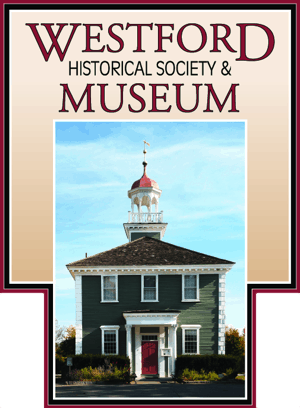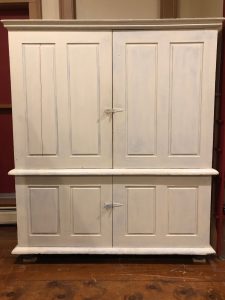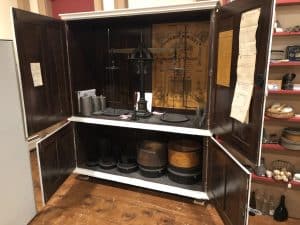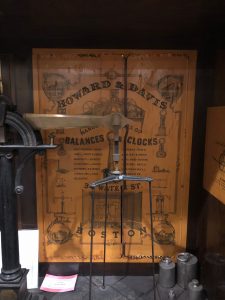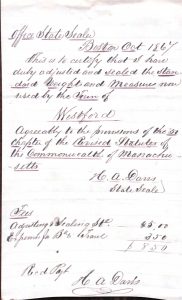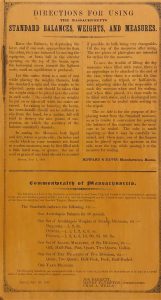Town Scale
Exhibited in the 2nd floor of the museum
The scale originally lived in the Westford Town Hall, and is enclosed in a large wood cabinet, which was painted somewhat recently. A standardized means of accurately regulating weight in the nineteenth century and later, it includes sixteen graduated weights, three liquid measures, five metal holders, and several small lead weights. Directions for use and certifications are pasted on the cabinet doors and interior. It was made for the town by Howard and Davis, Boston, MA, in 1848. Our scale was used by the Town Sealer of Weights and Measures to uphold the state’s standards. It was used from around 1848 to 1900.
Scale
Metal
Wood Cabinet, painted
W.2004.121
In the late 1800’s every city and town had a set of “Official scales” which were used by the local official who oversaw weights and measures throughout the town including being used at various markets
The doors of the cabinet open on two levels. The top section features a large equal-arm balance scale, surrounded by places to hold a set of 16 graduated weights, from a quarter-ounce to 50 pounds, that could be used in coordination with the scale or on their own.
On the lower level are numerous containers, with liquid measures going from one gill to one gallon and larger dry measures that go from a peck to a bushel. An iron gimbal can be attached to a slot on the cabinet’s left side, allowing these dry contents to be placed in the various containers and measured with precise leveling.
The scales were made by the firm of Howard and Davis of 34 Water Street, Boston as one of 330 sets ordered by the Legislature (one for each town, city, and county in existence at the time). There is some question as to the number delivered as several communities reportedly shared a set to minimize expense. As early as 1800 state statutes mandated “it shall be the duty of the treasurer of each town within this Commonwealth, at the expense of such town, to procure, and ever after to preserve as town standards, a complete set of the beams, weights, and copper or pewter measures While one might imagine the scales being used to weigh bushels of potatoes and gallons of cider, their function was not so much to determine weight as to ensure that other scales utilized in the town were accurate. Once a year all inhabitants and persons having places of business in the town who used weights, measures, and balances were required by law to bring in their scales to be adjusted and sealed to verify their accuracy.
